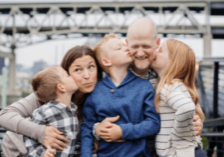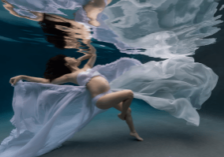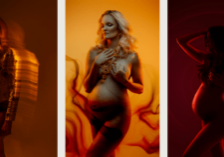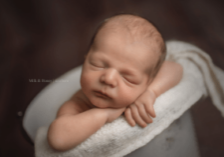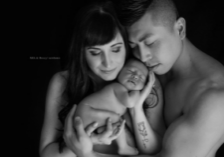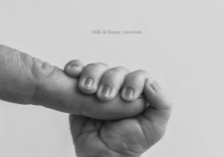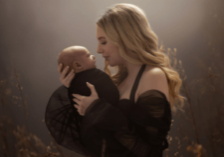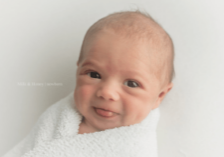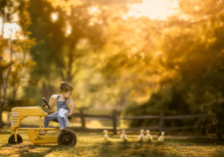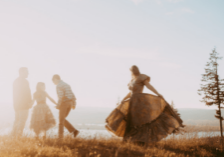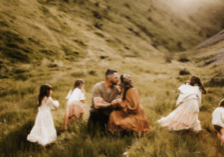Aftershoot: How Embracing an AI Workflow Can Help You Become a Better, More Efficient Photographer with Justin Benson
The age of AI is here… and that’s not a comforting realization for many of us working in the creative field. But the technology isn’t going away, so what if we could use AI tools to elevate our work, instead of replacing us?
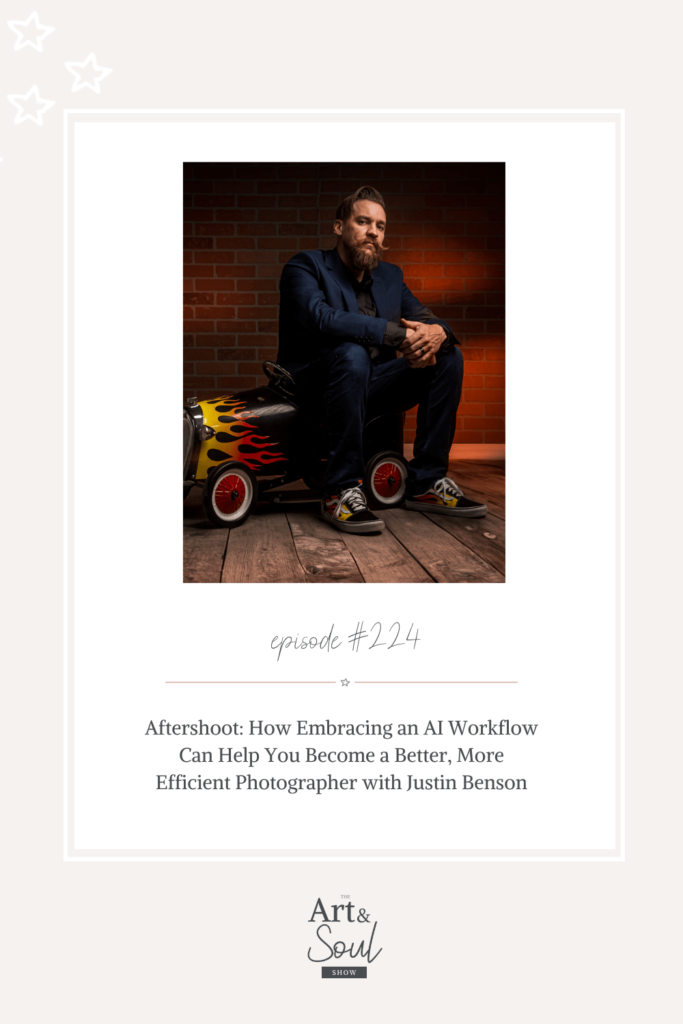
That’s the future Justin Benson and the team at Aftershoot have in mind for AI in the photography field. In today’s episode, Justin shares just what Aftershoot is, why it can be a game-changing assistive technology for photographers, and how he hopes the creative world will adapt to the advent of AI.
Plus, he’s sharing his best business advice, and how to start incorporating AI into your photography workflow if you’ve never tried it before.
If you’ve been struggling to make sense of AI’s introduction into photography, this conversation will be so uplifting and encouraging for you. Let’s dive in!
What’s in this episode:
- [02:35] What Aftershoot is and how it can help photographers (especially if you’re an over-shooter)
- [08:57] How Aftershoot is continuing to improve and add additional features
- [11:08] How the concept for Aftershoot was developed and why it’s always had elevating photographers as a core ethos
- [14:41] Some workarounds to use Aftershoot in a variety of workflows
- [17:33] How Justin sees AI continuing to evolve in the photography field
- [22:14] Justin’s best advice to photographers just starting to incorporate AI into their workflow
- [28:31] Justin’s lightning round, including a few more tips for beginning photographers
Tune in to this episode to learn more about how we can grow with AI technology like Aftershoot as photographers!
SUBSCRIBE: Apple Podcasts | Spotify
Want to put an end to awkward moments in your photo sessions and create genuine connection? Download The Storyteller’s Toolkit today, featuring 200+ emotive photography prompts, so you’re never left wondering what to say.
Resources Mentioned
Meet Justin Benson
Justin’s photography career began in the film and television industry. He started taking photos of interesting things he saw while working on TV shows from NBC and Warner Brothers, which quickly turned into taking photos of sets and evolved from there. In 2011 when a family friend needed a photographer for their last-minute wedding that Justin discovered what he was meant to do. From that wedding onward, he knew there was no place he would rather be than celebrating couples in love. As workloads grew, he was desperate to find a solution. In 2019 he was able to connect with Harshit Dwivedi, the founder of Aftershoot. Due to his invaluable ideas and dedication to helping shape the future of Aftershoot, Justin joined Harshit Dwivedi as Co-founder and is now Aftershoot’s Chief Innovation Officer.
Connect with Justin
Follow Aftershoot on Instagram
Visit Justin’s photography website
Did this episode on Aftershoot get you interested in more possibilities for AI in photography? Check out this episode The Empowered Artist : Embracing AI in Photography and Unleashing Creative Freedom with Twyla Jones that shares how another photographer is embracing AI.
Transcript
[00:00:00] Justin Benson: Over the next year and a half, you’re going to see that headshot program is going to take off. And that’s terrible. But that’s, again, where marketing for photographers needs to pivot because now, hey, yeah, sure, you can get this boring, weird headshot that comes out of an AI program, or you can get a lifestyle branding experience, right?
[00:00:18] You can get something more. So again, it’s about pivoting and marketing. And for us, it’s all about making sure that we’re creating tools that make the regular photographer better so that they can compete with that, right? I don’t want to see headshot photographers losing business to an AI. I want to see headshot photographers getting better results quicker so that AI is much less useful.
[00:00:43] Lisa DiGeso: Welcome to the Art Soul Show, where we dive into heart opening chats on photography, design, and design. Business, life, and that messy in between. I’m your host, Lisa DiGeso, a mom, a photographer, and entrepreneur, and I’ll be sharing honest conversations and advice for [00:01:00] photographers with insight on mindset, entrepreneurship, and creativity.
[00:01:04] The goal of this podcast is for you to be able to gain insights and strategies that will get you real results. Because let’s face it, having a photography business can be lonely, but it doesn’t have to be. This is the place you can go when you need a boost of encouragement, a kick in the pants, and inspiration to pick up your camera.
[00:01:24] This is the Art in Soul Show. Hello my beautiful friends, welcome back to the show. Today I’m super excited to dive into today’s conversation with Justin Benson from Aftershoot. Justin’s photography career began in the film and television industry. He started taking photos of interesting things he saw while working on TV shows from NBC Warner Brothers, which quickly turned into taking photos of sets and involved from there.
[00:01:50] In 2011, when a family friend needed a photographer for their last minute wedding, Justin discovered that’s what he was meant to do. So from that wedding onward, he knew there was no place he’d [00:02:00] rather be than celebrating couples in love. Now, as workloads grew, he was desperate to Brit to find a solution.
[00:02:05] So in 2019, he was able to connect with the founder of Afters Shoot due to his invaluable ideas and dedication to helping shape the future of afters. Shoot. Justin joined her sheet as Co-founder and is now Aftershoot’s Chief Innovation Officer. I am so excited to dive into today’s conversation because AI is so big, especially in the industry right now, and I love that I’m talking to one of the pioneers of it.
[00:02:30] So welcome Justin.
[00:02:32] Justin Benson: Thank you so much for having me. I’m so excited to be here.
[00:02:35] Lisa DiGeso: Awesome. So tell us a little bit what Aftershoot is for those that maybe know nothing about it.
[00:02:43] Justin Benson: Yeah, absolutely. So Aftershoot is an application for photographers. It uses AI algorithms to help suggest the best photos for you.
[00:02:51] And it can use AI algorithms to edit your photos in one of our styles, or it can learn your editing style and edit on your behalf. So again, it’s a [00:03:00] cool workflow tool to help speed up your process, but it’s not your replacement.
[00:03:05] Lisa DiGeso: I love that. I think that’s one of the biggest fears for photographers is like, we all want that faster workflow.
[00:03:10] And like for years it was like, okay, well you can outsource, but it’s that fear of letting go and letting someone else make the decisions. And that’s actually one thing that I struggle with because I’ve been an aftershoot user for I think almost two years now. And I love it. But at the same time, I’m like, okay, I’m just going to double check your work.
[00:03:27] Just going to make sure that you pick the ones I would pick and like most of the time pretty good. Right. That’s Do you have any advice on letting go of that control and really, like, learning to train the software and getting it to, like, understand what you really like?
[00:03:43] Justin Benson: Yeah, so when it comes to the culling process, it’s really important to know it’s going to give you one of everything regardless.
[00:03:49] So yeah, you’re going to get bad selections, but that’s by design. We always wanted it to be that way because there’s always those photos that maybe technically are perfect, whether [00:04:00] it’s closed eyes or blur, something’s just not quite there. But at the same time, it just has so much value to you for whatever reason.
[00:04:06] So we always wanted to show one of everything. But when it comes to helping it learn from you for the culling process, it really just revolves around repetition. So it’s extremely important just to keep at it, keep changing, keep adjusting, and being somewhat consistent in that. So the way the AI learns from you is saying, okay, you’re always preferring.
[00:04:28] better emotion, no matter what the standard is. And then it says, you know what? Even if it’s not as sharp of an image, we should consider that the better one, even if the, the emotions better, but the focus isn’t as sharp. So,
[00:04:39] Lisa DiGeso: yeah,
[00:04:39] Justin Benson: you know, when it comes to letting go, I, I will never let go. Right. I mean, it’s, it’s my touch.
[00:04:45] I’m expected that I’m hired to be involved, but the way I look at it is when I’m going through my images, I’m, If I see something and it looks good and it looks up to standard, I don’t need to see the other options, right? I know my clients are going to be happy with it. If I don’t know a [00:05:00] better option exists, they don’t know a better option.
[00:05:02] So
[00:05:02] Lisa DiGeso: it’s
[00:05:03] Justin Benson: really like, you know, but then when I land on a photo where I’m like, you know, I feel like I have something better, whether I was shooting through a moment, then I really stop and I, and I will look and I’ll see if I can swap something out. Cause there’s always just a creative vision. Sometimes I swap things just because I want to feel superior than AI.
[00:05:18] I’m just like, yeah, I’m going to trade out this one, even though they’re exactly the same, because I want to say I did this.
[00:05:24] Lisa DiGeso: I love that. What has been really great for me is I am a chronic overshooter. Like, Overshoot or to the max and like, and it’s not like I’m doing weddings, I’m doing like family sessions or newborn sessions, but I still ending up with these, you know, shooting like close to 700, 800 images during this time.
[00:05:42] And I’m like, okay, Lisa. And then, then when I go and edit them, I end up with these galleries of like 120 that I want to give to my clients. So what this has really helped me is it kind of puts the guardrails on and it’s like, okay, we’re going to look at the best of the best first. And then if you want to go look at other things, you can do that.[00:06:00]
[00:06:00] But now like. We’ve made it as efficient for you as possible to like maximize what you’re actually going to edit. So that’s one thing that has been like a savior for me. It’s been so wonderful.
[00:06:10] Justin Benson: Oh, absolutely. I mean, I, so I photograph weddings, engagement sessions, a little bit of family. I’ve got kind of a little bit of everything now, uh, but primarily weddings.
[00:06:18] So for me, I’m coming back from a wedding with 5, 000 photos.
[00:06:21] Lisa DiGeso: That’s
[00:06:22] Justin Benson: way too many photos to deal with on any level. Right. It’ll reduce me down to 1500. It gives me a nice starting point where I can then polish it and finalize it and like. You said 800 photos for a one hour engagement session. I’m shooting like 1200, 1300 photos.
[00:06:36] Yeah. Again, just being that much closer to an end result. It really helps speed up the process. So you can kind of let go a little bit and say, you know, I’m starting with 200 photos here. I want to give them a hundred. I can really just kind of alleviate some of that.
[00:06:50] Lisa DiGeso: Yeah.
[00:06:50] Justin Benson: But when I’m looking at like, say.
[00:06:52] Five identical photos in a row. I’m just sitting there going, okay, do I want one? Do I want two? Do I want three? Are they the same? Are they different? But when I see just [00:07:00] one of the five and the other five are still there, I can still look at them if I want, but I see that one and I’m like, yeah, that’s a great photo.
[00:07:05] I don’t need to deliver three of the same thing anymore.
[00:07:09] Lisa DiGeso: Yeah. It’s, it’s been really, really beneficial. And I think also just the time savings because I would always use photo mechanic. But what I love too, is I can tell if something is in focus and that was one thing all the other softwares were missing is like.
[00:07:22] I couldn’t tell if I was nailing my focus and I’m over 40. I’m starting to lose my eyesight a little bit. I have started to wear reading glasses and I was struggling to figure out. I’m like, is the problem my eyes, my lens, or like, like what is happening? Why does this not feel in focus? And now this tells me if it is or not.
[00:07:39] Having
[00:07:42] Justin Benson: that little shortcut. I mean, you know, for me, my favorite thing is that we have the key faces, right? So we pull out every face in an image. And that was always the most burdening, you know, issue, whether I was shooting a family session and I had five people in the photo and I’m like going through one by one.
[00:07:58] Okay. Are there, you know, Having [00:08:00] this, just lay them all out for me. I don’t need to zoom in anymore. I don’t need, I can just see. It’s in focus. Their eyes, where are they looking? It’s just a fast track. So, definitely, I am in the same boat. I am, now have to go to an uh, an eye appointment, cause I am also.
[00:08:15] Maybe it’s a photographer thing, maybe we’re getting old, who knows. But yeah, we have to start putting those, uh, those glasses on. So, uh, but yeah, this makes it easier.
[00:08:24] Lisa DiGeso: Oh, it was funny. So just, I actually sent my lenses to Nikon to like get them all tuned up because I was like, it has to be my lenses, everything.
[00:08:30] Like I’m just missing focus. They sent them all back. They’re like, Lisa, no, they’re fine. And then I went to the optometrist and she’s like, no, honey, like that’s. That’s you.
[00:08:40] Justin Benson: My big story with it, I was shooting a wedding and I, and I had the family’s photos and I had their names all listed out. And I looked down and I said, okay, now I need Jerry.
[00:08:50] And they were like, do you mean Jimmy? I was like, all right, I guess I need glasses.
[00:08:57] Lisa DiGeso: Yeah. My question actually is, [00:09:00] I sometimes have to do head swaps and I’m sure you have to do that with groups too. Is there the ability now or will there be the suggestion of suggested head swaps?
[00:09:10] Justin Benson: So it’s a possibility for us to do something like that.
[00:09:14] To be honest, I just take more photos now because I don’t have to deal with it. So my workflow actually changed. Like even my, even how I photographed. On events and everything, it’s all changed because now I’d rather take an extra 20 photos.
[00:09:27] Lisa DiGeso: Yeah.
[00:09:27] Justin Benson: To make sure that I get the one.
[00:09:29] Lisa DiGeso: Yeah. Than
[00:09:29] Justin Benson: to be like, oh, I’m gonna Photoshop.
[00:09:30] ’cause for me a head swap, it’s the last thing I wanna do. Like I gotta, I gotta edit them the same, bring them into Photoshop. Swap a head and then I’m spending like 10 15 minutes just doing one simple task, right? When sometimes you gotta swap five heads because you took two photos and you know So now I’m really just I’m overshooting a little bit more because of it cuz I’m like, you know If there’s ten people let’s take ten photos and hope that one of them they’re all looking like I’ll take five in a row And then I’ll say wait, wait, let’s do it again And then I’ll do another five and then I will get [00:10:00] one.
[00:10:00] Yeah, that is not in the head swap
[00:10:02] Lisa DiGeso: I like that, you know, and it’s funny cuz they’re all Like throughout the ages of my photography career, it’s like there’s almost been this overshooting shame. And it’s like, you know, it’s, it’s totally fine. Like it’s totally fine if you’re an overshooter, like overshooter,
[00:10:17] Justin Benson: you know, there was a stigma behind it before.
[00:10:19] Like, why can’t you just get it with less images. But there’s a couple workshops out there from some really renowned, especially like wedding photographers. They come back with 30, 000 images because the mentality there is shoot through the moment.
[00:10:32] Lisa DiGeso: Yeah.
[00:10:33] Justin Benson: Shoot the beginning.
[00:10:34] Lisa DiGeso: Yeah.
[00:10:35] Justin Benson: Shoot the middle. Shoot the end.
[00:10:38] Shooting more isn’t something. Yes, you have more work to do later, but shooting more means that you’re going to up the quality of your images. You’re going to be able to capture different moments. You’re going to sometimes take a bunch of photos that they just don’t work, but then you’re going to get one that you never would have gotten before.
[00:10:53] If you were so worried about like, Oh, I’m going to just, I’m going to shoot a thousand images at this wedding and that’s it. But instead, when you [00:11:00] shoot 5, 000 photos, you’re like, Oh, you know, this photo. This is totally something out of left field that I didn’t expect to work, but it worked.
[00:11:08] Lisa DiGeso: I love that.
[00:11:08] That’s so great. So can you maybe share where the concept for Aftershoot came from and how you and your partner really started the company?
[00:11:16] Justin Benson: Yeah, absolutely. So Aftershoot, Harshit was our, our, he’s our founder. So it was his kind of concept. He had an uncle who was a photographer. He’s based in India. So he had an uncle who was a photographer and like Indian weddings, they’re like three day weddings and it’s a big deal.
[00:11:29] So he watched him manually go through image by image. He saw the pain point from an outside perspective and harsh it, you know, he had sold companies, you know, to Google and different things before. So he’s very technical. And he said, you know, there’s definitely a way for a process. That could do this for you.
[00:11:46] And so he kind of hit the drawing board. I actually found out about it through a Facebook group. So there was just like a local Facebook group and they’re like, Hey, this guy just messaged me. He’s looking to talk to photographers. He has this crazy idea about some sort of [00:12:00] AI software for culling. And at that time I was shooting about 70 weddings a year.
[00:12:05] So I was overloaded. I was busy. I had a lot of work going on. So I immediately said, yep. What’s his Instagram. I’m going to go find him. I sent him a message and we went back and forth. We got on some zoom calls and I kind of just said like what I would be looking for in a software like that. So he took all of that feedback.
[00:12:21] He interviewed hundreds of photographers, took all that feedback, went to the drawing board and built like a version one of the app.
[00:12:29] Lisa DiGeso: He
[00:12:29] Justin Benson: sent it to 50 people, like the 50 people he got on the calls with. He sent the version two. I was one of the ones of the 50, like 40 just ghosted. 10 of them came back and said, Yeah, this is terrible.
[00:12:40] You should give up. Like, there’s no way this is ever gonna be a, a thing.
[00:12:43] Lisa DiGeso: Yeah. And
[00:12:44] Justin Benson: then I was there like, you know, this is the worst thing that’s ever happened to Macaulay. But, I think we can do this. I think there’s a way out of here. So I, I gave him all my suggestions, my ideas, my concepts, things that I thought would help him.
[00:12:56] You know, make it more like a photographer selection [00:13:00] process. Uh, and he went to the drawing board and from that point forward, we were on calls all the time and just kind of going through and spitballing ideas and trying to figure out how to make it a viable application for photographers.
[00:13:11] Lisa DiGeso: I love that.
[00:13:12] Ah, it’s so good. It’s so good. And like, I think I found out about you guys through my friend Twyla. And then I did the, I think there was a free trial. And then I was like, I’m just signing up. Like this is, this is so good. This is so good. And now there’s like a few others on the market now. But. I’ve tried them all.
[00:13:25] Yeah. I like hers.
[00:13:28] Justin Benson: I think what’s really cool about this phase right now is that we’re, everyone’s trying to innovate and find the next big thing and ways to improve upon it. You know, fortunately we’re, we’re at somewhat of an advantage. We actually started that, that first version that was terrible. I got that version 2020.
[00:13:46] So two weeks before lockdown. So we spent all of that COVID lockdown literally just. Harnessing all the power, I went back through all my old images and found examples and things and we spent, we had [00:14:00] nothing going on so we spent so much time dialing in this, this program so that by the time everything opened back up and everyone is overloaded, we actually had like a huge head start.
[00:14:10] I mean,
[00:14:11] Lisa DiGeso: we
[00:14:11] Justin Benson: do, we do the AI editing, right? That was an easy problem to solve. Right. AI editing is, it’s really, it’s a pattern based thing. It’s not super complicated to figure out. Culling is a whole different world. Yeah. So having that, that head start on the competitors really set us apart. We’ve got algorithms that, you know, have been very well thought out and well tested.
[00:14:30] And we found the holes and the problems and been able to fix them. So again, it does give us a little bit of advantage in that space. So that may be why you’re here. Most pleased with the results, but ours.
[00:14:41] Lisa DiGeso: Well, I haven’t tried the editing yet. And part of the reason is, is I am an ACR user. And so I have always taken like things and so I do my aftershoot call and then I take it and I take everything into ACR and do everything there, save it as PSDs and then run it through Photoshop.
[00:14:59] [00:15:00] So I was like, I don’t think I have the data to feed. into Aftershoot. So, unless I use Lightroom, right?
[00:15:08] Justin Benson: So, you do have the data. There’s one stipulation.
[00:15:12] Lisa DiGeso: Okay.
[00:15:13] Justin Benson: So, one thing you’ll have to do because you’re using ACR.
[00:15:16] Lisa DiGeso: Yeah.
[00:15:16] Justin Benson: You would need to take those original files that have the ACR edits applied to them.
[00:15:20] You do need to import them to Lightroom.
[00:15:23] Lisa DiGeso: Okay. So we can
[00:15:24] Justin Benson: only learn from Lightroom catalogs just because of the way it’s organized. Right. But, once you’ve built a profile, you can now open, with our latest releases, you can now open those directly in Camera Raw, or ACR.
[00:15:37] Lisa DiGeso: Oh! You don’t
[00:15:39] Justin Benson: need Lightroom to actually run the editing anymore, you don’t need Lightroom to view the edits anymore.
[00:15:44] You can actually take them straight from Aftershoot into Camera Raw.
[00:15:47] Lisa DiGeso: Interesting. So is this based on just like the Lightroom editing or is it the Photoshop editing as well?
[00:15:53] Justin Benson: Just the camera portion. So now we can’t learn the Photoshop processes just because there’s layers and [00:16:00] complicated things. And yeah, but all of those adjustments, um, that you have within your camera, we can replicate them the way you would.
[00:16:07] Lisa DiGeso: Yeah. That’s really cool. No, no
[00:16:08] Justin Benson: dependency on Lightroom anymore other than teaching it. So, I mean, that’s just because there’s, you know, There’s complications about doing it the other way. But yeah, all you’d have to do, because you already, if you have Photoshop, you have Lightroom. All you’d need to do is actually go to those files that you’ve had in ACR, just import them into Lightroom.
[00:16:26] Lisa DiGeso: Yeah. And that’s all you,
[00:16:27] Justin Benson: all you have to do.
[00:16:28] Lisa DiGeso: Once they’re imported,
[00:16:29] Justin Benson: the edits appear, everything appears there already, so all you have to do is go into Aftershoot and say, learn from these files, and yeah, so that was a, we, we launched the, the first version of that in February, so your files will open up directly in Bridge, Lightroom Cloud, Lightroom Classic, Camera Raw, um, which obviously leads to Photoshop, so we can actually edit all those files and open them up.
[00:16:50] In those different programs now.
[00:16:52] Lisa DiGeso: So cool. Oh, that’s that’s good news. I’m gonna be playing this weekend. Anything to speed it up.
[00:16:58] Justin Benson: Yeah, all all innovation. I [00:17:00] mean, it really is the editing. We didn’t really talk too much about it. But it’s it’s again, just another one of those processes that You know, as photographers, we, we apply a preset and then we go and we tweak on the preset and then, you know, if you’re doing bold stuff, you’re syncing that preset across, you know, there’s so many different processes and things that we as photographers have to do that are really mundane, right?
[00:17:21] Like that’s, we can take the, that whole process out of it and make it, Oh, you know, I’m looking at something that’s already had the preset applied, already been tweaked upon, and I’m just making sure that the final tweaks are good.
[00:17:33] Lisa DiGeso: Such a time saver, such a time, I love this so much. Okay, so in what ways do you see AI continuing to evolve in the field of photography?
[00:17:44] And how is Aftershoot adapting to stay ahead of that curve?
[00:17:49] Justin Benson: That’s a great question. You know, we’re, we’re really, really excited about who we are as a company. So, you know, first and foremost, I’m still a photographer. I still take on weddings. So it’s [00:18:00] really important to me that we respect the industry, that we help the industry grow, that we create this sense of community.
[00:18:05] We’re not here to like make a quick buck and take an exit or, you know, please some investors somewhere or whatever it is. We’re really just here because we want to solve four problems. For photographers, and that’s kind of my life goal, right? It transitioned from capturing everyone’s beautiful moments to now.
[00:18:21] How can I help photographers in any way, shape or form? Can I help them grow? Can I help them save time? Whatever it may be at my main goal in life now is to, to be that resource. So what it means to us is really just taking that feedback and that, that implementation of what photographers want to see AI do for them and finding ways to make it a reality.
[00:18:42] And that’s really kind of the core value here. It’s not, how can we make something that we can charge more money for? It’s how can we make something that is really going to impact the lives of photographers? That at its core means that we can really evolve in, in any way that our users see fit. I mean, we’re really, really.[00:19:00]
[00:19:00] Everything we do comes from user feedback. So someone says, Hey, I wish you could do this. And we say, okay, let’s launch that feature. Let’s figure out how we can do it, how logical it is to do it, what the technicalities of it would be. And let’s, let’s launch it. Let’s make this something that can help everybody a little bit more.
[00:19:16] There’s a lot of fear around what AI means in this space. I was at a conference for tech stuff recently, and there’s companies out there that are basically gung ho on trying to find ways to essentially eliminate the need for photographers in some places. It’s devastating, right? Wow. And honestly, I’m not going to call out any big name companies.
[00:19:37] But there are some big name companies that have just launched generative AI features that essentially mean that you don’t need a product photographer anymore. You can bypass a lot of the product photography. There’s companies doing it for fashion and all sorts of things, right? And to me, that’s devastating, right?
[00:19:53] There’s something to be said for capturing true to life things through [00:20:00] creativity. That AI can’t do and I, I, I think it’s devastating that they’re trying to find those, those avenues to, you know, again, the headshot thing, there’s that head, it’s not good. Oh no, I’m
[00:20:10] Lisa DiGeso: just like, no, or like, I mean, thank goodness AI still like can’t really get hands.
[00:20:15] Justin Benson: It’s not, it’s not good, but it’s gonna, it’s gonna get good, right? It’s getting
[00:20:19] Lisa DiGeso: there though. Over
[00:20:19] Justin Benson: the next year and a half, you’re going to see that headshot program is going to take off.
[00:20:24] Lisa DiGeso: Yeah.
[00:20:24] Justin Benson: And that’s terrible. But that’s again, where market, you know, where marketing for photographers needs to pivot because now, Hey, yeah, sure.
[00:20:32] You can get this boring, weird headshot that comes out of an AI program, or you can get a lifestyle branding experience, right? You can get something more. So again, it’s about pivoting and marketing and for us. It’s all about making sure that we’re creating tools that make the regular photographer better so that they can compete with that, right?
[00:20:51] I don’t want to see headshot photographers losing business to an AI. I want to see headshot photographers getting better results quicker so that [00:21:00] AI is much less useful.
[00:21:02] Lisa DiGeso: I agree. Oh, I’ve been playing a little bit with discord mid journey, but I use it to make backdrops and then I Photoshop where I create whatever I want into it.
[00:21:10] So I like using it as a creativity tool, but like I’m not replacing me. Right. I think that’s the one thing is like. Even with like the photography, if you plug in, you know, so and so photography into it, it always just has this AI look.
[00:21:24] Justin Benson: They’ll find ways to overcome that, right? I mean, that’s an AI is moving very quickly, so they’ll find ways to overcome it, but there’s always going to be a core value proposition of a photographer and that is I’m capturing real moments.
[00:21:36] Lisa DiGeso: Yeah. It’s such an
[00:21:37] Justin Benson: authenticity to what we’re doing. So there, there’ll always be a space for it. But again, how can we evolve as photographers with AI? How can we grow with it to give a better client experience? How can we grow with it to increase our caliber of work? I mean, just like you said, the backdrop thing is a perfect example.
[00:21:54] I mean, that’s, that’s a really good use of AI because you can create a backdrop that you could [00:22:00] never have or have created or purchased or whatever it may be before. You’ve created a new asset to your business using AI. And again, that’s really where we’re trying to push this. This field is how can we make photographers elevated using AI?
[00:22:14] Lisa DiGeso: Yeah, I love that. So good. So photographers that might be interested or scared incorporating AI into their workflow with Aftershoot. What advice do you have or tips if you’re just getting started?
[00:22:29] Justin Benson: Oh, you’re knocking the questions out of the park here. These are all great questions. You know, when it comes to AI, the thing I tell everybody is, It’s your assistant that you can’t talk to, right?
[00:22:41] So it’s going to get some things wrong and you can’t go and yell at them and say, Hey, you magical unicorns, you’re terrible at doing your job, right? Um, all you can do is try and teach it better in the future. So when it comes to your first time using like, for instance, the color, this is a great example, run it on some looser settings.
[00:22:58] You’re going to not find as [00:23:00] much of the benefit, right? So if you say, Hey, give me more images. You’re going to not see as much time savings, but you’re going to start getting a feel for how AI works because as much as we can put into it, there’s also some things that it’s just generally going to do different than a human would.
[00:23:15] And this is a great opportunity for the user to get in there and say, okay, where are the shortcomings of AI and where are the good and positive things? Like, where is it really outperforming, uh, what a human would do? And then slowly ramp it up from there and say, okay, I asked it to give me. More images.
[00:23:32] Maybe I’ll give it the medium setting now. I’ll let it give me a little bit less images. I’ll see where the difference is between what it did on the more images and what it did now. So again, you can walk into it slowly. We even have a brand new mode. It’s called AI assisted culling. And all it’s going to do is pull out the key faces and mark the focus and the closed eyes on the faces.
[00:23:55] And then it’s going to stack the similar images. So again, Just a, it’s a completely [00:24:00] manual tool. You still have to go in and pick every single image, but if you’re kind of afraid of how AI works and how, how you can get involved with it, it’s just a great starting point. It’s features that you can’t really get from a lot of programs, right?
[00:24:11] And the, and that’s a hundred percent free, right? That’s our introductory, like. You, we’re not going to do a lot of the work for you. We’re just going to help you do your manual process, but yeah, going nice and slow, same with the editing, that’s a really important one. I think a lot of photographers are like, if I just give it all this work, it’s going to totally, it’s going to replicate my behavior, but again, it’s that assistant you can’t talk to.
[00:24:32] So if I expect it to edit like me on a cloudy day, if I ask a human to do that, I’d still need to give a human a thousand images outside on a cloudy day, all different conditions for it to learn. So it’s important to know that, like, if you expect it to know how to do something, you got to show it a bunch of examples, like not just one session on a cloudy day, you want to show it 10 sessions on a cloudy day, one where you’re an open shade on the cloud, because even a cloudy day is different.
[00:24:58] Lisa DiGeso: One
[00:24:58] Justin Benson: cloudy day to the other cloudy [00:25:00] day, one location on a cloudy day versus another location. So you really have to show it that variety and what you expect it to learn for it to pick up on that.
[00:25:08] Lisa DiGeso: And probably even giving it a few sessions in different types of sessions and not expecting it to be like really fast out of the gate because it is that beginner learning stage that you kind of have to go through.
[00:25:19] It was like when we all learned Photoshop or like when I recently got a bread maker and put all the ingredients into And didn’t really read the instructions and then expected me to have this amazing gluten free bread that popped out and it was hard as a rock. There was nothing wrong with the bread maker.
[00:25:36] I didn’t put the right ingredients in.
[00:25:38] Justin Benson: Yeah, actually, that’s the bad. I’m going to probably start using that analogy moving forward. Cause I love that. I mean, really. It’s what you give it how you teach it your first time making bread. It’s not going to be great I mean, you’re probably not gonna end up with what you expected, but that’s where experimenting and trying different things and Utilizing it it just gets better and better the more you do [00:26:00] it and then before you know it you’ve got a bakery
[00:26:02] Lisa DiGeso: Yeah, I love that.
[00:26:03] Awesome. And what’s been the best piece of business advice you’ve ever been given?
[00:26:09] Justin Benson: There’s so much advice, unsolicited, solicited, there’s everywhere you go, somebody is giving you advice. And I think that the, the best and it’s the simplest, the best piece of advice that I’ve ever been given for my business is don’t listen to advice.
[00:26:27] Lisa DiGeso: Yeah.
[00:26:27] Justin Benson: Right. Take everything and just. Say, okay, that’s that’s how that person would do it. Maybe I take a piece of that or some portion of it, but there’s not one size fits all, right? Especially in a photography business. Nothing is the same, right? So everyone’s going to say, charge your work, right? That’s a very common one that everyone says, charge your work, charge your work.
[00:26:48] But If you’re charging your worth, but your worth isn’t really deserving, you know, it doesn’t apply. Or in my case, like, I’ve shot probably close to 500 weddings. [00:27:00] I’m very well experienced. There’s no situation I can walk into that’s not taken care of. I have no fears, no nothing. And at the end of the day, I could charge 20, 000.
[00:27:10] That would be what my expected worth is. I don’t have 20, 000 clients. No. That’s not, that’s my worth, but that’s not what I can charge, right? So, it’s taking that, that piece of advice and saying, Okay, that’s my worth, but what’s my market?
[00:27:22] Lisa DiGeso: Yes.
[00:27:23] Justin Benson: And combining those two things, and that’s where I find that middle ground.
[00:27:26] So, don’t take everybody’s advice. Take all of the pieces of it, absorb it, and understand that some parts might fit and some parts might not fit.
[00:27:35] Lisa DiGeso: I love that so much. I love that so much. It’s so true. And it’s like you can’t outsource your thinking either, right? Like, that’s one thing. Stop trying to hire people to think for you.
[00:27:45] Justin Benson: Yeah, I mean what works for my photography business for marketing is something that nobody told me.
[00:27:51] Lisa DiGeso: Yeah,
[00:27:51] Justin Benson: right. So my, my entire business operates on It’s direct referrals, and it’s very much so venue based referrals. So, my target [00:28:00] was finding the venues to become preferred at, building relationships, and I do everything they ask, right?
[00:28:05] Like, everyone says, oh, charge the venue to put your thing here, and do this, and do that, and I took none of that advice. I said, you know, for me, it’s more important to be in the good graces of the venue.
[00:28:16] Lisa DiGeso: Yeah.
[00:28:16] Justin Benson: And then the venues are the ones that are like, yeah, this is the guy you got to go higher. And the inquiry is like, I don’t market, I don’t advertise, I don’t do anything.
[00:28:23] And the inquiries never stop. They still come from all of those venues over and over again, just because if they ask something of me, I do it.
[00:28:31] Lisa DiGeso: I love that. That is smart business. I love that. So good. All right. You ready for our lightning round?
[00:28:37] Justin Benson: I hope
[00:28:38] Lisa DiGeso: so. So if you like to cook, what do you like to cook most?
[00:28:42] Let
[00:28:43] Justin Benson: So I am a terrible cook. I do thoroughly enjoy making cookies out of the box though. So I, I, you know, you crack the egg and the, and the flour, that’s my favorite.
[00:28:52] Lisa DiGeso: I love it. Okay, I’m a story. So I have not, never really been a baker, and I’m a 14 year old son. And so I [00:29:00] baked cookies from scratch for the first time.
[00:29:02] He took them to school and he told his girlfriend and all his friends that he cooked them. He was amazed. He was like, they were so good. And he’s like, he’s like, Mom, he’s like, can you make more cookies? I’m like, I don’t know if I can, man. Like, I’ve never done it before. That was the first time.
[00:29:18] Justin Benson: That’s why I like the box mix, right?
[00:29:20] Because I am consistent there. Like there is no, no experimentation required. I will always deliver an okay cookie or an okay cupcake by just following instructions.
[00:29:32] Lisa DiGeso: Really? I love it. So what’s your favorite movie?
[00:29:36] Justin Benson: Oh, this is embarrassing. My favorite movie is Dumb and Dumber.
[00:29:39] Lisa DiGeso: Oh, it’s a good one.
[00:29:41] Justin Benson: It’s a good one.
[00:29:42] I
[00:29:44] Lisa DiGeso: could pull up so many quotes right now.
[00:29:46] Justin Benson: Me too. Don’t get me started.
[00:29:50] Lisa DiGeso: The Mockingbird song we actually sing on all road trips.
[00:29:53] Justin Benson: Oh, me too. It’s a standard.
[00:29:57] Lisa DiGeso: Favorite guilty or not so guilty pleasure? [00:30:00]
[00:30:00] Justin Benson: So I am really, really, I love Reese’s peanut butter cups, and I will eat them pretty much every day, like every, I have stacks at, you can get at like some of these stores, they have like bulk packs of Reese’s peanut butter cups, and I have them, and I eat them like four to six every night.
[00:30:16] I love it. So good.
[00:30:19] Lisa DiGeso: What is something you’ve accomplished as an adult that your younger self would be proud of?
[00:30:24] Justin Benson: Wow, my younger self would probably just be proud that I am. anything, right? I think when I was younger, I would have never guessed that I am where I am today. Awesome.
[00:30:37] Lisa DiGeso: Oceans or mountains and why?
[00:30:39] Justin Benson: Mountains all day because, uh, beaches have sharks. True. But I, I sunburn pretty okay. So yeah, I, I like some trees and some shade. So yeah, definitely mountains are beautiful.
[00:30:52] Lisa DiGeso: I love it. When do you feel most authentically yourself?
[00:30:56] Justin Benson: I feel most authentically myself when I’m helping people, right? I [00:31:00] mean, there’s It’s just who I am as a person.
[00:31:03] I’m always just me when somebody’s in need.
[00:31:08] Lisa DiGeso: I love that. What advice do you have for someone just starting out in photography?
[00:31:15] Justin Benson: Yeah, I just said, don’t take advice from other people. And now, uh, but no, there’s so many, so many places to start and so many paths to take in, in photography. And I think the most important thing that any photographer needs to just sit down and realize is don’t worry about everybody else.
[00:31:36] There’s going to be a million other photographers in your area charging less. Even if you’re the cheapest, you’ll find somebody that’s cheaper than you. So don’t really worry about what everyone else is doing. Focus on you and your journey, right? Network with the people you want to, you want to be their photographer for.
[00:31:52] Work towards the final goal of being satisfied with your business and where you are. For me, like I said, weddings, I loved [00:32:00] weddings. I shot that first one and I said, this is what I want to do. I love people happy and they’re in their proudest moments. That’s what I wanted to do. That’s where the money is too, but you shouldn’t be doing it for money.
[00:32:11] You should be looking for the, I mean, obviously it’s a business. You have to make money, but you should be looking at where do you want to be and how do you turn that into a brand?
[00:32:20] Lisa DiGeso: Love that. So good. So where can our listeners learn more from you?
[00:32:24] Justin Benson: So of course, Aftershoot, we’re AftershootCo on Instagram.
[00:32:27] If you want to connect with me, I’m jbensonphotography on Instagram, but, uh, always happy to get messages and give advice and all of the things because if I can help, I’m happy to.
[00:32:39] Lisa DiGeso: Well, I love to end my interviews just with this last question and it is, what are you currently curious about or artistically curious about?
[00:32:48] Justin Benson: Oh, that’s a, that’s a surprise question. Okay. Bye. Intrinsically, I’m very curious about how creative processes are going to adapt and adjust, right? I think there, right now, is a time [00:33:00] frame when so many things are different. And the creative is not right. So the creative side of things, you will always be creative.
[00:33:08] But again, these AI tools where I can spit in prompts and get inspiration and take that inspiration and go implement it in real life, or I can take some concept that I had in my head and actually execute on it because I don’t need to fly to Iceland to go stand on this location, right? I think there’s so many bounds and ways that creatives can adapt and adjust in this new age.
[00:33:29] So So I’m, I’m very curious and inquisitive to see like, how do we do it? How as an industry are we going to change and be better as a whole?
[00:33:40] Lisa DiGeso: I love that. Well, Justin, thank you so much for joining me today.
[00:33:44] Justin Benson: Thank you so much for having me. It was an absolute pleasure.
[00:33:49] Lisa DiGeso: Oh, my beautiful listeners. I hope you have loved this conversation just as much as I have.
[00:33:55] And I’m going to make sure we link you over to aftershoot and the show notes so you can check it [00:34:00] out too. Thank you so much for joining to me. I am sending you so much of my light and love today and every single day, we will see you next time.
[00:34:13] I wanted to take a moment to ask you a little favor. I so appreciate you spending your time with me and tuning in and listening to the show. I would be so incredibly grateful if you could take a quick moment to leave a review on Apple Podcasts. Your review helps other photographers discover the podcast and learn how to grow their own photography businesses and gain confidence to go after their dreams.
[00:34:38] It also means the world to me personally and helps
[00:34:44] so much for your support and for being part of our amazing community.
share the love
[Sassy_Social_Share]
recent
Podcasts
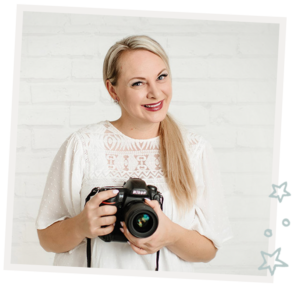
I'm
Lisa DiGeso
I’m on a mission to create uplifting online experiences for photographers ready to elevate their art, their business and their mindset.(...and have fun along the way!)

